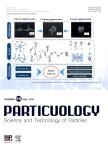Positron emission particle tracking——Application and labelling techniques
Positron emission particle tracking——Application and labelling techniques作者机构:School of Physics and Astronomy the University of Birmingham Edgbaston Birmingham B15 2TT UK
出 版 物:《Particuology》 (颗粒学报(英文版))
年 卷 期:2008年第6卷第1期
页 面:16-23页
核心收录:
学科分类:0809[工学-电子科学与技术(可授工学、理学学位)] 08[工学] 0817[工学-化学工程与技术] 0805[工学-材料科学与工程(可授工学、理学学位)] 0703[理学-化学] 0702[理学-物理学]
主 题:PEPT Tracer Algorithm Tracking
摘 要:The positron emission particle tracking (PEPT) technique has been widely used in science and engineering to obtain detailed information on the motion and flow fields of fluids or granular materials in multiphase systems, for example, fluids in rock cracks, chemical reactors and food processors; dynamic behaviour of granular materials in chemical reactors, granulators, mixers, dryers, rotating kilns and ball mills. The information obtained by the PEPT technique can be used to optimise the design, operational conditions for a wide range of industrial process systems, and to evaluate modelling work. The technique is based on tracking radioactively labelled particles (up to three particles) by detecting the pairs of backto-back 511 keV γ-rays arising from annihilation of emitted positrons. It therefore involves a positron camera, location algorithms for calculating the tracer location and speed, and tracer labelling techniques. This paper will review the particle tracking technique from tracking algorithm, tracer labelling to their application.



